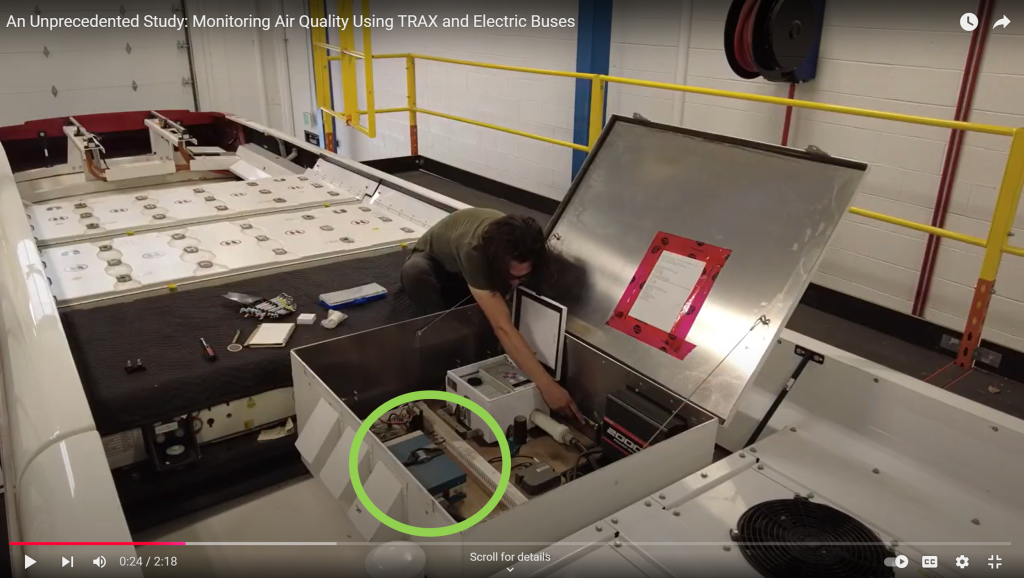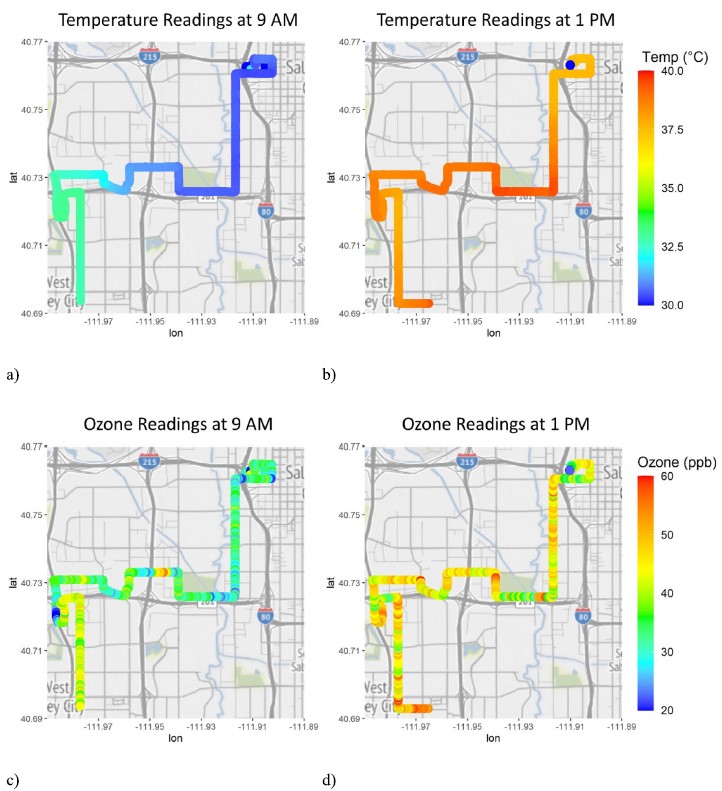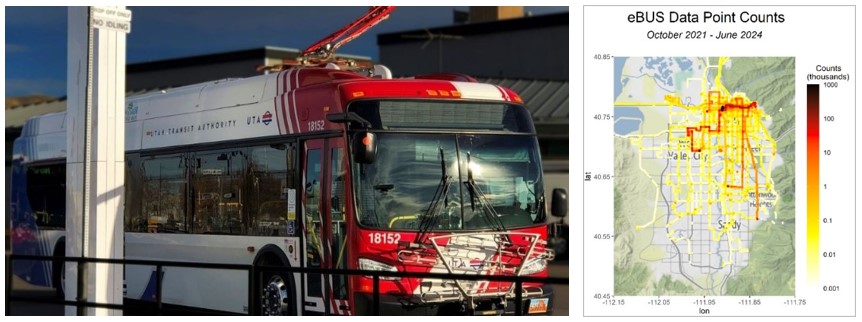Salt Lake City Goes All-Out with Mobile Network for Air Pollution Monitoring.
One thing leads to another! So goes the rock song… and so it is with the expanding program to monitor air quality in Salt Lake City, Utah.
Click the picture below to watch the video, and then read our story! (Our Model 205 Dual Beam Ozone Monitor is in the green circle.)

For over a decade, Salt Lake County has shown that the public transit system, and sophisticated air monitoring equipment, make a great team in tracking how air pollution affects residents. They started in 2014 with the 3 light-rail lines of Salt Lake’s TRAX system. In the last 3 years, they’ve expanded to also using 15 electric buses that crisscross the County and cover much more ground. It’s a collaboration of the University of Utah, the Utah Transit Authority, the Utah Division of Air Quality, and Salt Lake County experts. The aim is to get a better handle on how to improve the air quality situation in Salt Lake, which is in nonattainment of federal standards for particulate matter (PM2.5) and in moderate nonattainment for summertime ozone.

An array of air monitoring instruments, including 2B Tech’s Model 205 for measuring ozone, is packaged with electronics and communication for data gathering into an enclosure that rides on the top of the eBus. The use of the battery-powered electric buses ensures that the monitors are not sampling the buses’ own emissions, which can be an issue with using gas-powered vehicles for mobile monitoring.
A recent paper by University of Utah professor Daniel Mendoza and colleagues gives an overview of what has been accomplished so far with the program. It might just be the most data-dense program in the world for mobile AQ monitoring, says Mendoza. Over 25 million temperature and ozone readings were obtained from October 2021 to June 2024, and 18 million readings of particulate matter (PM2.5). The readings blanket the city and county in a way that the area’s fixed network of 9 air quality measuring stations can’t do. With all 15 e-buses now outfitted with the AQ monitors, over 100,000 measurements are logged on a typical weekday.
The wealth of data can be viewed in near real time on the web, enabling decisionmakers to locate the pollution hot-spots that call for a closer look at nearby emission sources. Residents, too, benefit from locating areas of lower pollution and adjusting plans for being outdoors, for example. It is hoped that the program could lead to more equitable policy development, because higher pollution exposure is often found to occur in less affluent neighborhoods.

Figure: Ozone and temperature readings during a “heat dome” event that occurred on 17 July 2023 in Salt Lake. [Figure credit: Figure 4 of Mendoza et al.]
Check out the published paper, and the video linked at the beginning of this story, for more information about this innovative program. And the next time you find yourself riding a bus in Salt Lake–think about the high-tech passengers riding above you measuring air quality!
——————————–
Electric Buses as an Air Pollution and Meteorological Observation Network: Methodology and Preliminary Results, D.L. Mendoza, A. Gonzalez, A.A. Jacques, C.M. Johnson, P.T. Whelan, and J.D. Horel, Science of The Total Environment (2024) 951, 175327.

